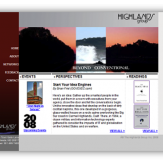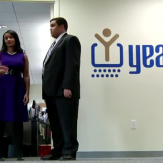We produced a compelling video for our client’s Curriculum Improvement Partnership Award grant at Hartnell College in Salinas, CA. The video “Hartnell: A Story of Hope” illustrates how the grant changed students and faculty members’ lives for the better.
With the CIPA grant, Hartnell College was able to infuse their Engineer curriculum with project management training, which helped students and faculty perform at a higher level and significantly upgrade their skills and performance levels. We traveled to Salinas, California with our video production team and spoke to inspiring faculty and staff, and amazing students.
Pre-Production
The CIPA program, funded by NASA, approached Meesha Media Group to create a documentary film that would highlight the achievements of Hartnell Community College and its’ successes in the Project Management initiative funded by the NASA CIPA II grant. Hartnell Community College is a Hispanic Serving Institution located in Salinas, California. MMG was presented with the task of traveling to Salinas and capturing their story. The initial phase in the Pre-Production process was completed at the MMG office in Fairfax, Virginia. MMG met with the Project Officer for the CIPA program to identify the goals of the documentary and the important points of contact at Hartnell in order to adequately flush out the story of the Project Management Program at Hartnell. MMG’s Producers then set about to create a coherent story arc with the aid of the Project Officer and the Project Manager at Hartnell. A story arc diagram was constructed and submitted for approval. Once the major aspects of the story had been cemented, MMG then conducted video and phone conferences with the major characters for the proposed documentary. The information was then transcribed and a Documentary Treatment was created that summarized the major movements and story telling devices for the piece. This Documentary Treatment was then submitted to the Project Officer for approval. It was decided during the last Pre-Production meeting with CIPA officials that an overly structured documentary replete with voice over narration would be detrimental to the project. As a result the Cinema Vérité style of documentary film was chosen as the visual vehicle to tell the story of Hartnell Community College. The Vérité style allowed the human element to be inserted into the production and in the end gave the production and immediacy and depth of story telling that was lauded by the funder−NASA.
Production
This Production was shot on location in Salinas, California by a documentary production team from MMG. The team arrived in Salinas and immediately met with the Faculty and Staff of Hartnell Community College. The Pre-Approved Shooting Script was handed out and the team explained what they hoped to accomplish during their week of shooting. The MMG team then did an exhaustive Location Scout in order to confirm that each location that was highlighted in the Story Arc was locked down and ready for production. Over the seven-day shoot, the MMG team conducted over twenty-five interviews (including the Mayor of Salinas, Dennis Donohue) in ten different locations across the Salinas Valley. All interviews were shot using two High Definition Canon XL H1 cameras that recorded to Digital Firestore recorders. High Definition Audio was recorded using (1) Sennheiser Boom Microphone and (2) Sennheiser lavaliere microphones.
Post Production
In order to create an engaging plot for the documentary, the production team at MMG set out to transcribe all of the interviews that were conducted at Hartnell Community College. The transcription provided the team with the building blocks that were necessary to construct a strong visual story. MMG’s resident editor then took this “paper cut” and transformed it into a working first edit. It was then sent to the client for approval. The Editor then took the suggestions submitted by the client during their first draft review to create a fattened second edit that included details that the client and MMG deemed to be important to the story. The second edit was submitted with applicable color correction and audio sweetening, with included music bed, as a final draft for the client’s approval. The final product was presented to the client on DVD for dissemination.























